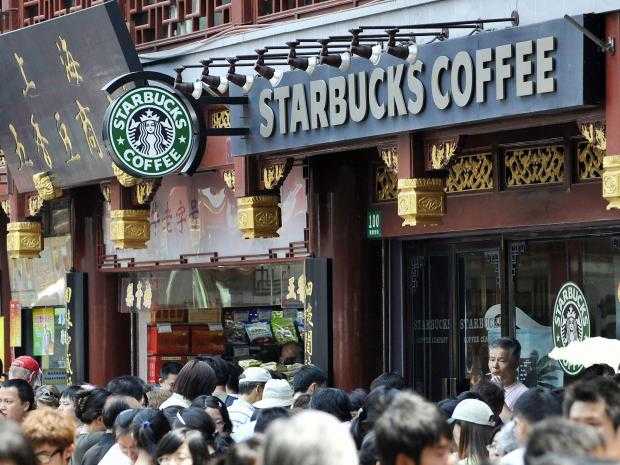MILAN – Chicken, China and coffee are three factors driving growth and profit in the current foodservice industry, according to Euromonitor International Consumer Foodservice Analyst Stephen Dutton.
His analysis of today’s foodservice stage indicates that those three “Cs” represent the biggest industry trends over the past year and will continue to do so in the year ahead, with increasing activity in Chinese markets, and acceleration of innovative ideas for chicken and coffee offerings and concepts.
Steady global value growth expected, emerging regions driving growth
Total foodservice value sales grew by 4.6 percent in 2016, with similar expected growth for 2017. Expected value growth through the forecast period remains steady in prices, having long recovered from the global financial crisis when consumers opted to cut unnecessary spending on services, like eating out.
Even with inflation’s effects removed, transactions and value (at constant 2016 prices) move consistently through the forecast period. This suggests the industry is stabilizing, meaning consumers remain willing to spend on foodservice when it is affordable.
In fact, more consumers are doing just that. Likewise, aside from the U.S. market, value growth is being buoyed by emerging markets. For instance, over the next five years, consumers are expected to spend nearly twice as much on foodservice in China as in the U.S. The Chinese market will remain central to many corporate global growth strategies.
‘Winner, winner, chicken dinner’
The strongest performing format in 2016 was chicken fast food, which grew 8 percent by value to reach $65.6 billion in total global sales. As a menu offering, chicken enjoys universal appeal.
Unlike more regionally specific items like pizza or burgers, chicken is found on menus worldwide and is highly adaptable to local consumer preferences. That explains also why although chicken is a familiar offering in most markets, demand for new, modern chicken fast food concepts is still being driven by a set of increasingly influential players.
KFC still dominates the global fast food chicken market, but has consistently lost share to competitors like Popeyes Louisiana Kitchen which was purchased by Restaurant Brands International earlier this year. That acquisition is evidence of the format’s potential, and it’s likely that Restaurant Brands International will look to take the concept to new markets where the demand is high.
A strong cup of coffee gets even stronger
The specialist coffee shop category was the second fastest-growing format in foodservice last year by value and continued to perform well in all world regions. That’s evidence of the format’s increasingly universal appeal, but specialist coffee shops have also become particularly attractive to consumers in emerging markets.
In Latin America and Asia Pacific where the format grew fastest, demand for specialist coffee shops is driven by a consumer base with greater access to disposable income. Diners in these markets can now afford the relative luxury of specialty beverages. The category’s third-place format offers additional reprieve for consumers in emerging regions that increasingly lead busier, more urban lifestyles.
Getting ‘technical’ gets customers
Technology has become an integral part of the foodservice industry’s global growth strategies, with the fastest- growing global chains also often be those which have most embraced tech-driven foodservice. With an effective mobile strategy, popular rewards program and modern payment options, Starbucks, for example, grew to close the gap with leading operators McDonald’s and those under Yum Brands and Restaurant Brands International.
Likewise, no company in the top 10 global rankings has grown more quickly than Domino’s Pizza in 2016. It’s likely no coincidence that the delivery-based chain also has continued to invest in technology that enhances the ordering, preparation, and delivery convenience and speed, which worldwide consumers have shown they increasingly prefer.
Maybe one more ‘C’?
Convenience stores or C-stores’ chunk of the fast food pie grew 6.1 percent by value in 2016. Japan-based 7-Eleven parent, Seven & I Holdings Co. Ltd., for instance, overtook Subway parent, Doctor’s Associates Inc. last year to become the world’s fifth largest foodservice company by value.
Foodservice offerings at convenience stores also continue to improve as operators increasingly seek to attract customers through these products and services. By blending on-trade and off-trade offerings at value-oriented prices that appeal on variety and convenience, C-stores are becoming the foodservice format that modern consumers need. Additionally, today’s C-stores increasingly offer more healthful menu offerings and in-store dining options.
What’s next?
During this edition of Euromonitor International’s research, analysts in all 54 countries were asked to submit the most interesting and relevant new restaurant concepts in their markets. These new concepts will form the basis of two new global briefings designed to uncover the most important foodservice trends emerging worldwide.
Across the planet, global consumers increasingly lead digitally connected, urban lifestyles and restaurants are learning to cater to their needs and preferences.
That’s why the range of offerings includes everything from Finnish street stalls offering vegan comfort food, to Filipino food parks. They all underscore the importance of novelty and innovation to the overall success of all foodservice concepts.
Elizabeth Friend















